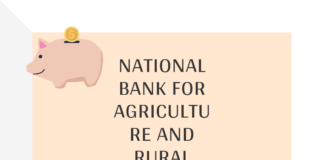In today’s world, taking on the responsibility to make changes in society is crucial. Hence, it doesn’t matter how small or big the groups or people who attempt to make a difference. Currently, several organisations help spread awareness about a specific incident, subject, or cause. One of them is Vijnana Bharti, a significant national movement that promotes scientific research and enunciates the importance of ancient scientific discoveries and methodologies in India. It is known that India has a rich history, with discoveries dating back to the 4th century and even earlier. So, Vijnana Bharti helps people understand their objectives and initiatives through its efforts. And this article will explain those details and more:
A. What is it?
Vijnana Bharti (VIBHA) is a non-profit scientific movement that promotes the importance of science and its applications. It also bridges the gap between ancient and modern science, using both to pave a smoother way to live. It was officially launched in 1991, though its core idea sparked back a decade before that. It was established by a group that consisted of a blend of innovative thinkers, retired scientists, and others, with the key founder being Dr. Vasant Gowarikar, the former scientific advisor to Prime Minister Rajiv Gandhi. The words have Sanskrit and Hindi roots, with ‘Vijnana’ or ‘Vigyan’ meaning ‘science’, and Bharti refers not only to India but also to Goddess Saraswathi, the symbol of knowledge. And together, they mean ‘Scientific India’.
B. Key features:
Here are the key features that make VIBHA stand out as a unique movement:
a. Swadeshi Science:
VIBHA not only promotes modern science and scientists but also highlights ancient scientific discoveries and spreads awareness of how they helped humanity to find and create more. It also emphasises that India should be self-reliant and give opportunities to scientists of the present time.
b. Education:
VIBHA also focuses on encouraging the younger generation to understand the importance of science in the current time. It also provides opportunities to students to see their strengths and weaknesses in the scientific field of their interest by conducting contests and competitions.
c. “Time and Temporal”:
VIBHA emphasises ancient scientific practices and modern ideologies, not only individually but also together. Sometimes, modern problems have their solutions in ancient methods, which may seem obsolete. Hence, we should carry the legacy of the ancient science and its essence.
d. Female empowerment:
VIBHA also places prominence on representing women in the scientific world. Not only India, but women of various countries and ethnicities contributed to science, which are often overshadowed or swept under the rug. The change in time should be acknowledged, and everyone should be given an equal chance, despite their gender and other factors.
e. Ancient practices:
VIBHA shows how fields like Ayurvedha and Yoga impact modern society in terms of health and spirituality. It also places importance on astronomy and Vedic sciences and how many of those discoveries, if not all, remain relevant.
f. Collaborations:
VIBHA also collaborates with organisations like the National Council of Research and Training (NCERT) and the Council of Scientific and Industrial Research (CSIR) to organise events that help all age groups of students.
g. Rural development:
The movement also helps students and young adults from rural areas to make a difference by providing a platform for them to display their inventions that help rural villages and people. So, it doesn’t spare anyone from proving themselves.
h. Startups:
It also promotes individuals and groups to make startups with their ideas and inventions, which may grow to achieve more than they expected, and helps thousands and even millions of people.
C. Initiatives:
Ever since its establishment three decades ago, it has adapted to times and taken up the most innovative and inspiring initiatives:
a. Vidhyarthi Vigyan Manthan (VVM):
This is a talent search contest that VIBHA organizes for classes 6th to 11th and is the biggest talent search competition in India. It helps promote fondness for science at a younger age but also acts as a platform for students to showcase their talents and participate in national camps and other events. It even has NCERT and the Ministry of Education as partners, and is conducted in many languages to ensure inclusivity and allow more students to participate.
b. India International Science Festival (IISF):
It is an annual festival that emphasises the scientific spirit and is organised with the help of the Government of India and sectors like the Ministry of Science and Technology. It also celebrates India’s eminent scientists and scientific achievements throughout the centuries. This allows time for people to understand their significance and appreciate the innovative things of various eras. It achieves this through exhibitions, science shows, workshops, and more.
c. Bharatiya Vigyan Sammelan (BVS):
It is a gathering that allows intellectuals of all ages to express their opinions on how to improve and solve problems through scientific applications. It places focus on sustainability, indigenous development, and also on reforms in the scientific field.
d. Vishwa Ved Vigyan Sammelan (VVVS):
It is also a gathering that focuses on the prominence of Vedic sciences and their applications. People of all sorts of opinions, from Sanskrit scholars to modern scientists, gather and discuss this philosophy and how valuable ancient science and wisdom are to the modern world, and also how the former can influence and guide the latter.
e. Shakti:
It is one of the initiatives made by VIBHA that focuses on empowering women through science. It uses technology to teach women that they can also become leaders and entrepreneurs, wiping away centuries of discrimination and stigma. Good ideas can appear in the minds of people, and they can be not only men but also women. Shakti encourages women through workshops in Science, Technology, Engineering, and Mathematics (STEM).
f. Tech4seva:
This initiative aims to solve problems through technology and scientific thinking, especially in rural areas, in a service approach. It focuses on renewable and new forms of energy that are accessible and sustainable. This movement collaborates with NGOs and other organisations to bring forward help and solutions to those who need them.
g. World Ayurveda Foundation (WAF):
These initiatives help in promoting the credibility and effectiveness of Ayurvedic medicine on a global scale. This medicinal field, which has been underappreciated but has been known for its rich history, will reach new heights when given a chance. It also hosts the largest global Ayurveda event called the World Ayurvedha Congress, and also promotes this field for young students. Since the healthcare industry needs to be regulated with proper evidence and backup for medicine, this initiative hopes to provide that.
D. Achievements:
After all those initiatives, VIBHA gained achievements that help spread awareness and appreciate the efforts of this movement:
a. Recognition and awards:
For all its initiatives and achievements, VIBHA received the National Award for Outstanding Efforts in Science and Technology Communication from the Ministry of Science and Technology in 2007 for its contributions under the Swadeshi Science movement.
b. Competitions and events:
It also conducts Vidhyarthi Vigyan Manthan and India International Science Festival, in which millions of people participate every year. This helps in inculcating and promoting fondness and an appreciative sense towards science and encourages students to display their talents, gain opportunities, and recognition.
c. Startups:
Though many of its initiatives, like Tech4seva and Shakti, enabled people to establish a name for themselves by making inventions and developing technology that helps thousands.
d. Women’s empowerment:
VIBHA also helped many women to gain confidence and realize their dreams, and not to give up, no matter how resistant and oppressive some parts of society may seem.
e. Ancient and Modern Science:
VIBHA also aided in bridging the gap between ancient and modern science, and also helped people in finding better ways to improve their health through practices like yoga.
f. Scientific Literature:
VIBHA also published many articles, books, and journals that spread awareness about their cause and also show the importance of science.
g. Volunteer work:
VIBHA operates across 22 states through volunteers and helps promote its objectives and achieve tangible results in various regions, towns, villages, and cities.
E. Challenges:
Here are a few challenges faced by VIBHA:
a. Doubt:
Many people do not believe in the applications of ancient science in modern times. It can be true because the needs, environmental conditions, and other factors are quite different from those of centuries ago.
b. Communication barriers:
Though they operate across 22 states in India, creating material and spreading messages can prove to be a challenge due to language barriers, and may also require a lot of time and resources.
c. Criticism:
Many criticise VIBHA for alienating a few scientific and academic circles, and also for being too ‘ideological’, and for other factors.
d. Funding:
Since it is a non-profit organisation that relies on volunteers, donations, and funding from public sources, it is not suitable for long-term goals, as the money supply can change annually due to various factors.
e. Consistency:
In order to continue the interest in science among youth and other age groups, VIBHA has to be consistent in its initiatives while also increasing its coverage, which can be a bit complicated.
f. Public opinion:
Not all parts of society believe in scientific innovations, as many communities still focus on cultural and religious sentiments, and they might not take this initiative seriously.
F. Suggestions for the future:
There are many ways and methods that VIBHA can take in order to expand its coverage and promote its objectives. The first one could be taking advantage of the present digital literacy and have mobile applications, which can be set in various languages per the user’s needs. VIBHA can also collaborate with private institutions to teach students the prominence of ancient science. It can also implement more global strategies that help propagate the rigour and effectiveness of ancient scientific practices, especially in healthcare.
To conclude, Vijnana Bharti is a popular movement that has accomplished much so far. It helped promote science, which is ideal for all age groups. For students, it has competitions and contests that create interest and also give them all a chance to show their talents. For young scientists, it helps them develop their technology and increase practicality by helping people solve problems. All together, it helps India to recognise its scientific talents and give them opportunities to grow and develop the country.
Also read: KAMP NASTA EXAM










